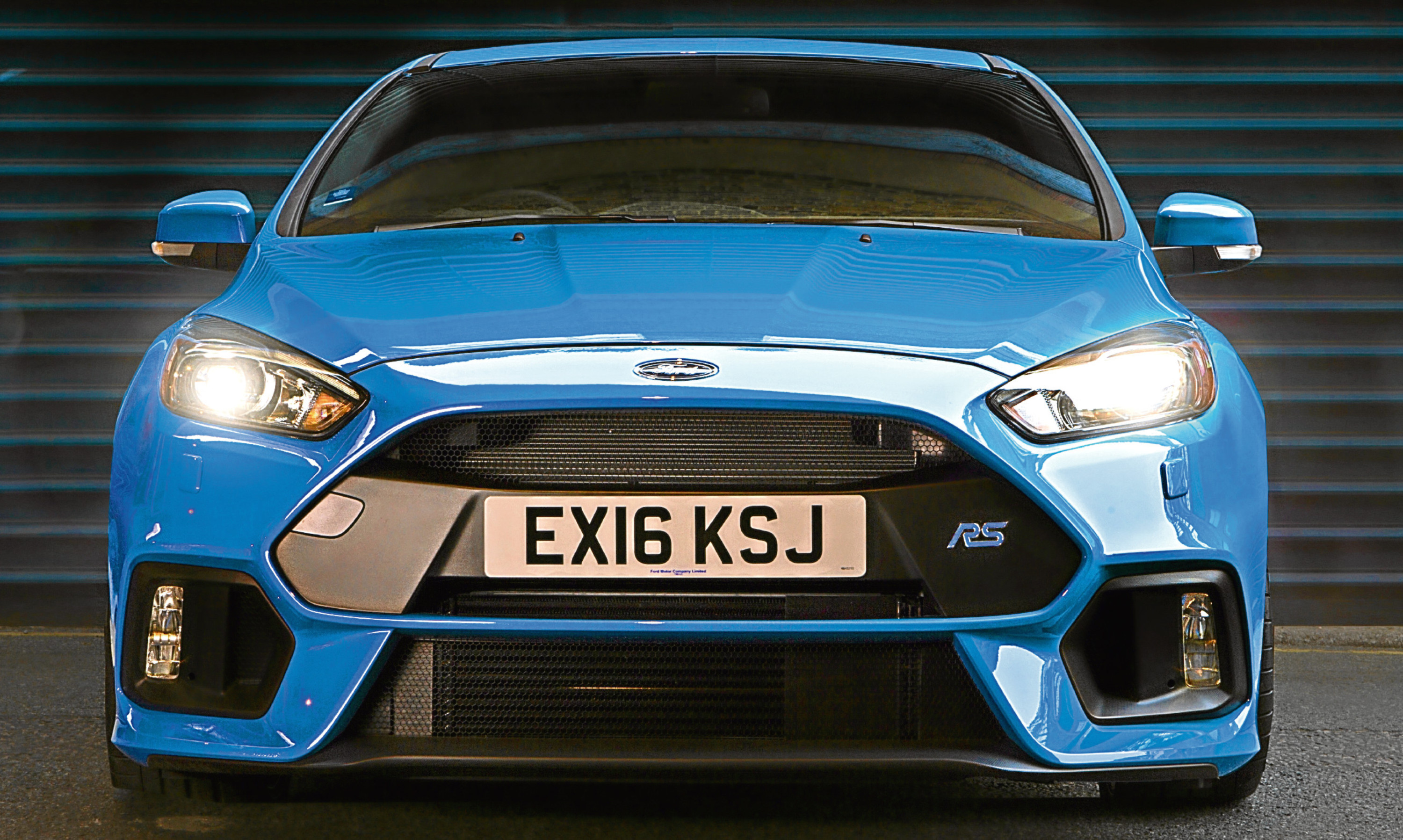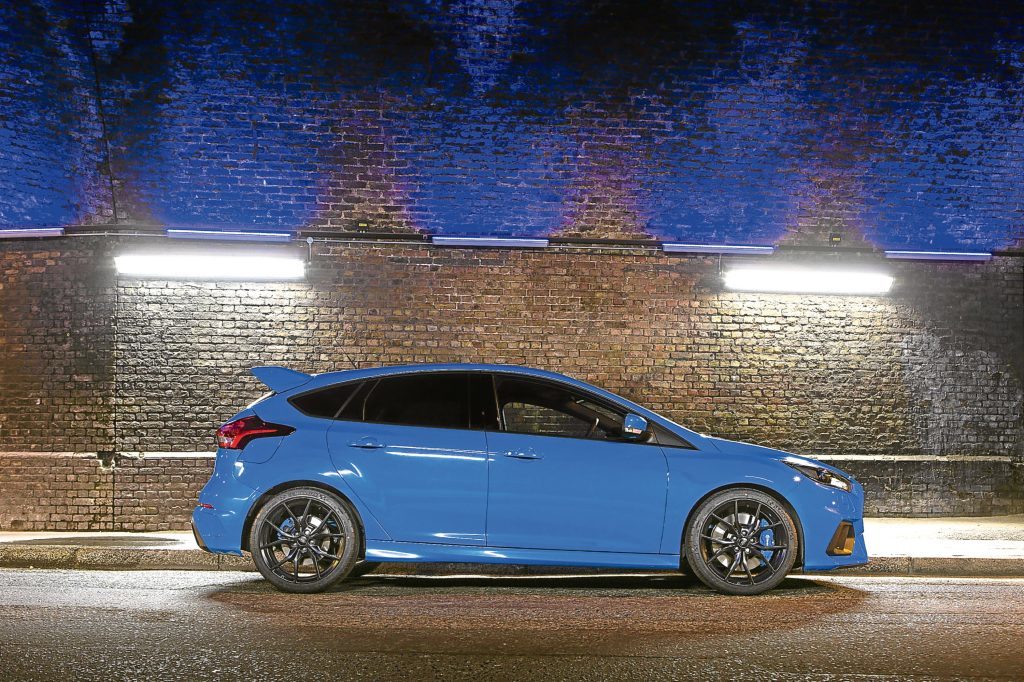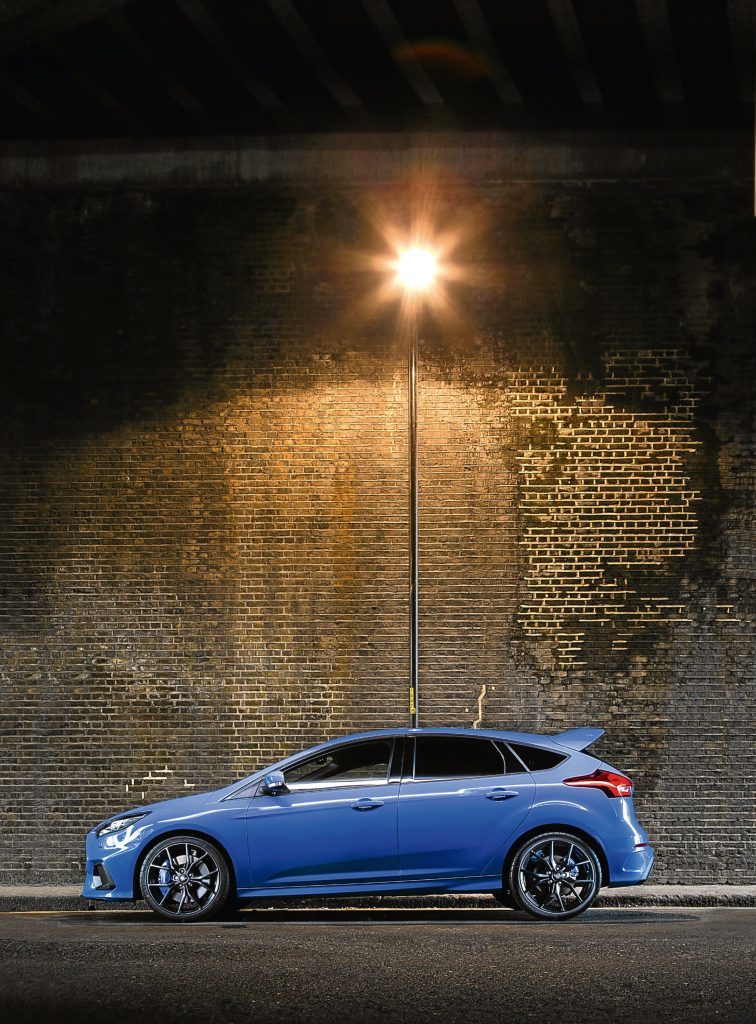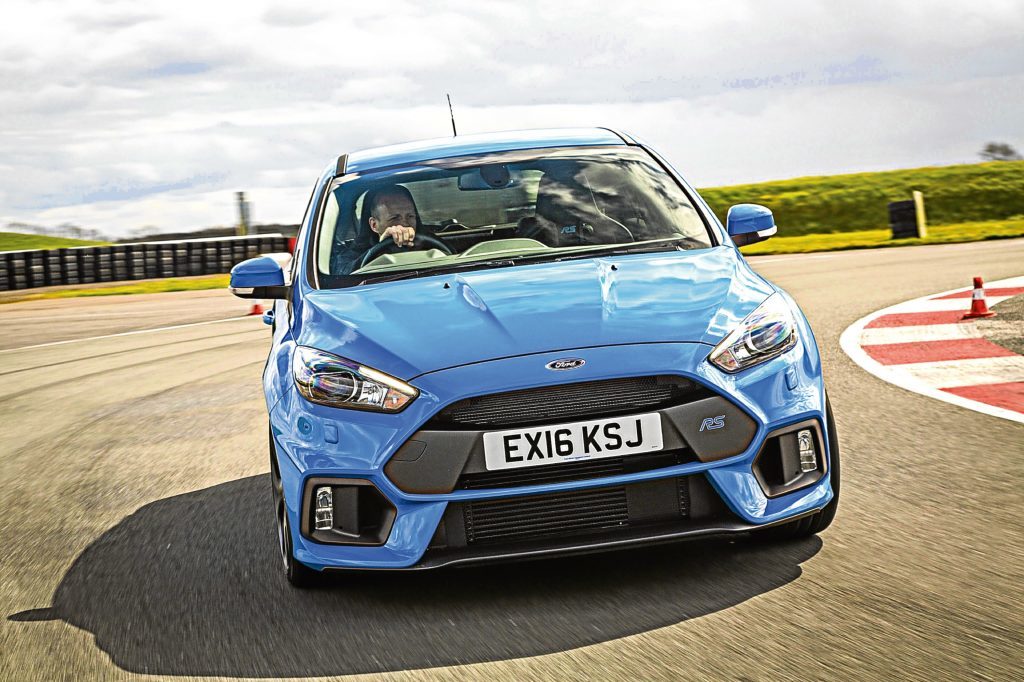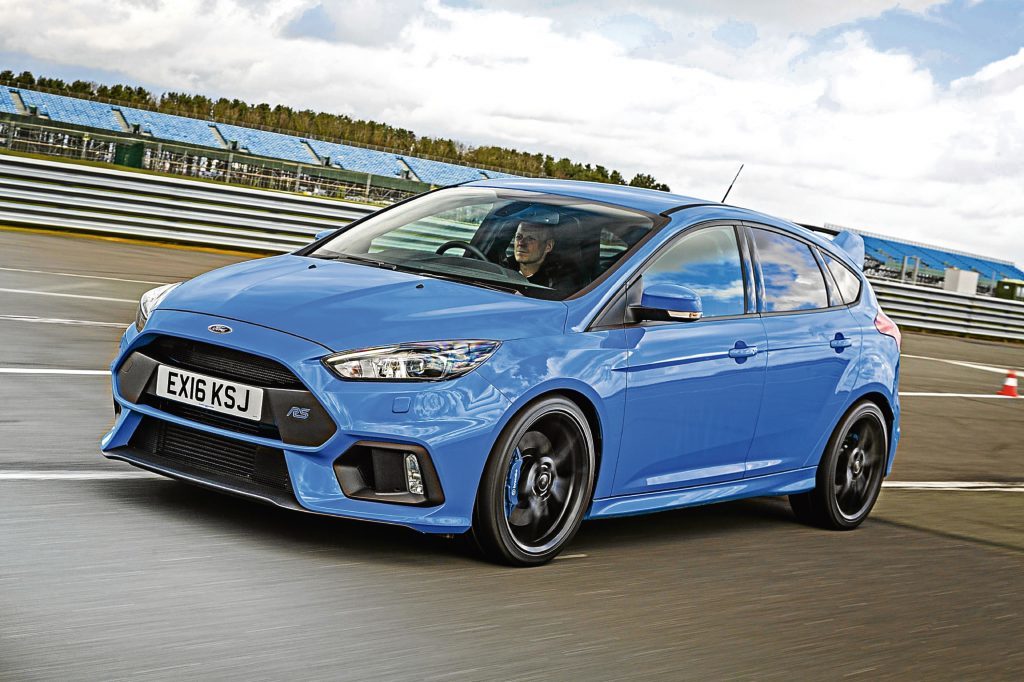Over the past decade or two hot hatch makers have been engaged in something of an arms race.
When I was learning to drive in the mid 1990s your average hot hatch might be endowed with 150bhp. Post 2000, many hot hatches began breaking the 200bhp barrier.
Just four years ago I remember being wowed by the Megane Renault Sport 265 which had – you guessed it – 265bhp.
Even that seems like small potatoes compared to this: the latest Ford Focus RS.
Its 2.3 litre four-cylinder turbocharged engine delivers 350bhp. That’s enough to send the car hurtling from 0-62mph in just 4.7 seconds. Pay an extra £900 for the performance upgrade package and that gets trimmed to 4.5 seconds.
Of course, no front-wheel drive car could usefully use that sort of power.
I drove the Honda Civic Type R earlier this year. It “only” has 306bhp and even with traction control working overtime the front end wriggles around like nobody’s business under hard acceleration.
Foreseeing major issues here, Ford has cleverly fitted four-wheel drive to the Focus RS.
It’s a master stroke, turning a great hot hatch into a world beating one.
The Focus RS costs around £31,000. That might sound a lot for something based on a humble family hatchback, but for a four-wheel drive sports car with 350bhp it’s pretty incredible.
I had a brief drive in one earlier this year and, having now spent a week in its company, am fair smitten with the car.
I’ve driven plenty of cars that are faster than the Focus RS but they’ve all cost north of £70,000, and even then they’re not all that much quicker
From a standstill all the way through to 70mph the RS pulls like a train, surging relentlessly forward with the willingness of a Porsche 911. Only once you’re pushing hard in fourth gear onwards does the lighter weight and better aerodynamics of a true sports car allow it to pull away.
Essentially, on public roads you’ll never notice the difference between this and a car costing three times as much.
The four wheel drive system is adaptive sending engine torque to the wheel that needs it most.
In the majority of situations that means the car stays planted to the road, but the system also enables the inclusion of a special Drift mode that can push the car out of traction using the outside rear wheel, then hold the slide by sending most of the power to the back axle.
Needless to say you would need to book a track session or have access to a private road in order to safely enjoy this feature.
Of course, no one drives around with their foot to the floor all the time. I drove the Focus RS to Edinburgh and took it on and afternoon jaunt to rural Angus.
When you’re pressing on it’s an outstanding driver’s car. But ease off and it’ll happy cruise quietly or pootle through a village at 20mph.
The suspension’s on the firm side, of course, but it’s not too harsh and the Focus RS could be used as a commuter car if you can afford to fuel it – official fuel economy is 37mpg but drive as it’s meant to and you’ll get 28-29mpg.
At the moment none of the Focus RS’s rivals can touch it. The Civic Type R needs four-wheel drive. The VW Golf R, which has all-wheel traction, probably comes closest but it only has 296 bhp. The Audi RS3 has a touch more power but it costs over £40,000.
The Focus RS really is an astonishing car. I can’t see anything on the horizon that looks like toppling its position as the king of hot hatches.
jmckeown@thecourier.co.uk
Price:
£31,000
0-62mph:
4.7 seconds
Top speed:
165mph
Economy:
37mpg
CO2 emissions:
180g/km
